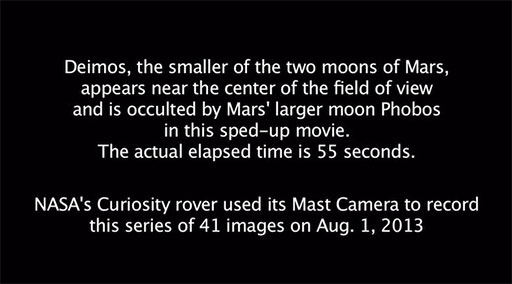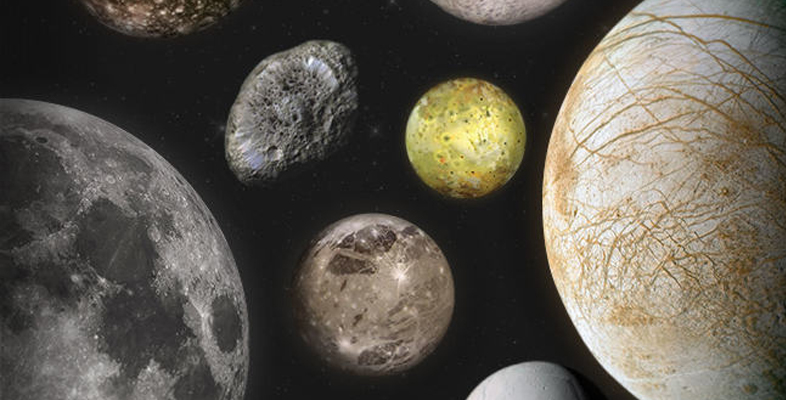3.2 Phobos seen from the surface of Mars
According to John Murray, the answer is that the grooves were formed when Phobos passed through ejecta flung out from an impact on Mars – like a car passing through a hail of machine-gun bullets.
Phobos is only about 6000 km above the surface of Mars, and this is close enough to be within range of ejecta flung out from large impacts.
This video was shot from the surface of Mars by NASA’s Mars Curiosity Rover on 1 August 2013. It shows Phobos, the nearer to Mars of the two moons, passing in front of Deimos. Although Phobos is very much smaller than our Moon, its orbit is so low that in Mars’ sky it looks about half as wide as the Moon does in our own sky. The sequence has been speeded up from an actual elapsed time of 55 seconds.

See also: Phobos grooves as tidal stretch marks? [Tip: hold Ctrl and click a link to open it in a new tab. (Hide tip)] An alternative explanation of Phobos’s grooves from the November 2015 annual Meeting of the Division of Planetary Sciences of the American Astronomical Society.
